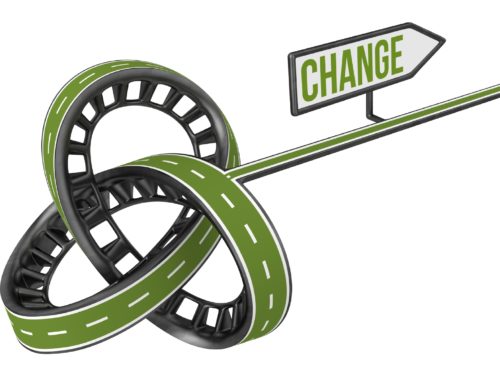Hope, we’ve been told, is not a plan or strategy. It is wishful thinking that cannot be measured. You can’t hold people accountable for failing to deliver on hope.
Hope is, also, exactly what we need from leaders today. It is essential for navigating uncertainty and coping with high levels of stress. It is the intangible that inspires solutions to seemingly impossible problems.
Why hope matters
The last 18 months have taken a toll. The summer of 2021 was supposed to mark a return to normalcy. Instead, we cratered into another surge of uncertainty about when the pandemic will be “over.”
In addition, you and your team members are likely feeling agitated bordering on angry about something.
Joshua Morganstein, chair of the American Psychiatric Association’s Committee on the Psychiatric Dimensions of Disaster, says “The country is now dealing with ‘three disasters superimposed on top of one another’: the pandemic, the economic fallout, and civil unrest. Certainly, one way of responding, and a common way of responding, is anger.”
Restoring and replenishing hope mitigates the effects of long-term stress while protecting your organizational culture, productivity, and performance.
What’s a leader to do?
Viktor Frankl’s experience in the Nazi death camps of World War II makes the ultimate case for the power of hope. There is no comparison between the atrocities Frankl and his fellow prisoners experienced and today’s challenges. There are lessons that can be adapted
Writing in the classic and timeless Man’s Search for Meaning, Frankl said, “The prisoner who had lost faith in the future—his future—was doomed. With his loss of belief in the future, he lost his spiritual hold; le het himself decline and became subject to mental and physical decay.”
Frankl went on to say, “Any attempt to restore a man’s inner strength in the camp had first to succeed in showing him some future goal.”
Napoleon was correct, “A leader is a dealer in hope.”
Here are four ideas to guide you in restoring a sense of hope. They are not a “one-and-done” To-Do list. Think of them as principles to incorporate into the fabric of how you lead yourself and your team.
- Acknowledge reality without being paralyzed by it.
We want people to check their personal lives at the door. It doesn’t work. There is no work – life separation. There is only life, and we live it where we are in the moment.
You can – and should – acknowledge the stress and frustration that exists in the world without descending into a pit of endless discussion. To think otherwise is an outdated approach to leadership that can make matters worse.
The issues creating stress and agitation are difficult and laden with emotion. Engage an outside resource (internal or external) if you are uncomfortable creating the space for a safe, respectful discussion. Your goal is to acknowledge reality and feelings while recognizing that the team can’t become paralyzed by frustration, fatigue, fear, and anger.
- Influence perspective.
The world isn’t simply uncertain. It is also a paradox. Jobs are plentiful, and the pandemic continues to rage on putting current and future jobs at risk. The stock market is up, and so is global instability and social inequity. Some friendships have deepened, and others have gone away over the past 18 months. Overall confidence ratings about the future have remained relatively stable. Confidence in major institutions such as the government, public schools, and the criminal justice system have declined, however.
Frankl wrote, “No man and no destiny can be compared with any other man or any other destiny.”
You can try to balance negative perceptions with legitimate perspective, but you can’t sugarcoat or diminish the experience of others.
Your goal is to help others reconnect with their own broader purpose not convince them that their perspective is wrong.
- Address what you can.
Awareness of a problem and acknowledgement of feelings are a start. They do not satisfy the human need for achievement that is crucial for motivation.
“There’s the rub!” to quote Shakespeare.
Many of the contributors to the stress and agitation you and your team experience are out of your control. Chances are, for instance, you can’t solve climate change any more than the pageant contestant wishing for wishing for world peace can eliminate wars.
Hope Theory has been shown to help people with mild depression remain focused and positive as they navigate their path to a desired destination. Key elements include developing and acting on specific goals that translate intention into action.
For leaders, taking even small steps to attack seemingly unsolvable problems expands connection and trust while contributing to hope.
- Start a flood that pays off in the future.
The destructive images from Hurricane Ida are still fresh as this article is being written. That is not they type of flood we’re talking about.
Farmers in ancient Egypt recognized three seasons: the flooding season, the growing season, and the harvest season.
The regular flooding of the Nile River enriched the land with deposits of sand, silt, and other debris that made the ground more fertile. The higher the flood, the better the crops.
It’s the same with your team. You will yield even greater returns down the road if you flood them with:
- Concern for their safety and well-being
- Transparency and attention
- Positive recognition and energy
- Opportunities for them to contribute new ideas to improve
Lead with hope. It is an essential strategy for keeping your team focused, positive, and engaged in the face of uncertainty and stress.
Randy Pennington is an award-winning author, speaker, and leading authority on helping organizations deliver positive results in a world of uncertainty and change. To learn more or to engage Randy for your organization, visit www.penningtongroup.com, email info@penningtongroup.com, or call 972-980-9857 (U.S.).
This article was first published on LinkedIn.





